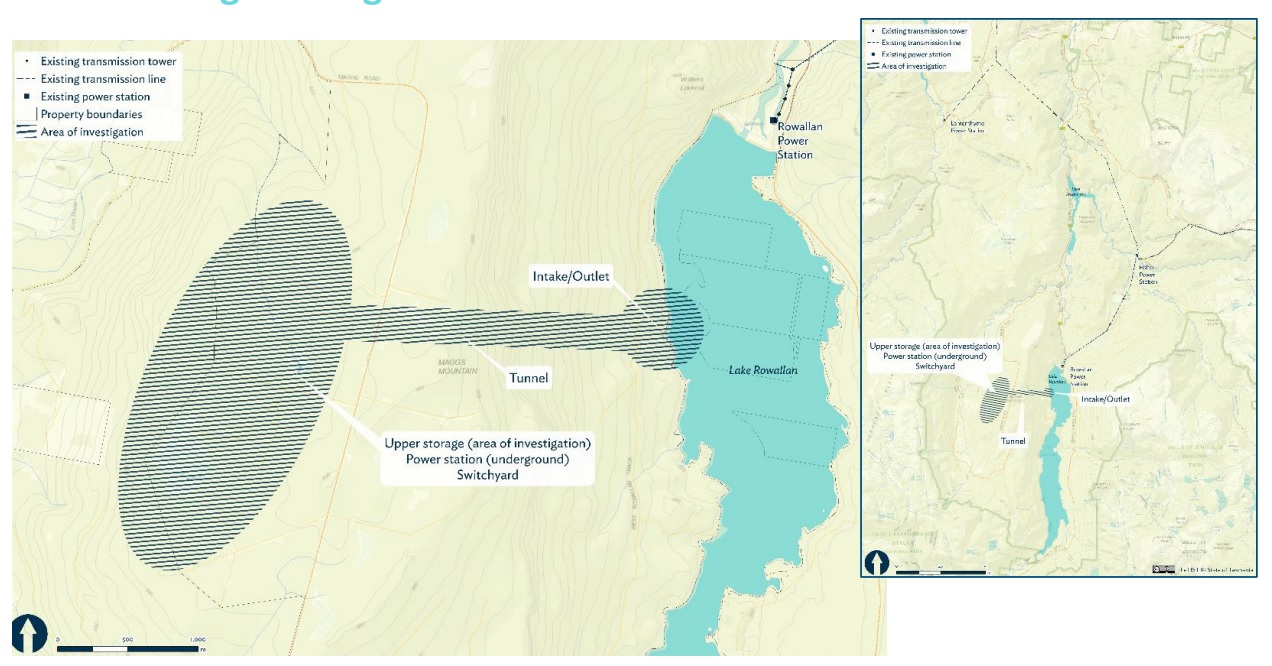Just how big are Tasmania’s potential pumped hydro sites? Let’s compare them to Tesla Powerwall 2’s.
In 2019, Hydro Tasmania completed prefeasibility studies into fourteen potential Tasmanian pumped hydro energy storage projects. Incredibly, eight of these sites were found to be suitable to proceed to feasibility studies at some stage. With our extensive hydroelectric network, Tasmania is spoilt for choice!
Investigations have continued at the most promising three sites (Lake Cethana, Lake Rowallan and Tribute), and one of these will be selected to be the first site that could be developed (subject to approvals, feasibility and consultation) – but it won’t be the last!
As more coal fired power stations retire in Queensland, New South Wales and Victoria, massive energy storage will become increasingly needed to store excess variable renewable energy generation (wind and solar) for use when it is needed.
So to see just how big are these pumped hydro storages are, let’s do a simple comparison between one of the three shortlisted sites, Lake Cethana pumped hydro, to Tesla Powerwall 2’s.
Storage size is described by how quickly it discharges (in kW or MW) and how much energy it stores (in kWh or MWh). A Tesla Powerwall 2 discharges at 5kW and holds 13.5 kWh of usable energy, which means they last about 2.7 hours. They cost around $15,000 installed.
Lake Cethana pumped hydro has a capacity of 600 MW – the equivalent of 120,000 Tesla Powerwall 2’s, and can discharge for 11 hours – it would take 480,000 Tesla Powerwall 2’s to discharge as much energy for 10.8 hours! The cost of Lake Cethana pumped hydro is estimated at $900 million, while the cost of 480,000 Tesla Powerwall 2’s is $7200 million ($7.2 billion). Lake Rowallan has the storage of over a million Tesla Powerwall 2’s, and Tribute is over 1.1 million Tesla Powerwall 2’s! Earlier this year, Tesla installed its 100,000th Powerwall worldwide.
What about big batteries? To last as long as Lake Cethana pumped hydro, it would take the equivalent of 28 to 32 of South Australia’s Hornsdale Power Reserves, which until very recently was the biggest lithium ion battery in the world. Using Hornsdale’s construction costs, that would cost $4.5 to $5.2 billion (Hornsdale was built for $90 million and upgraded to 150MW/194MWh at a cost of $71 million).
Another difference between storing potential energy using pumped hydro vs storing chemical energy using batteries, is that the capacity of pumped hydro won’t change, while batteries eventually start to lose their capacity to hold a charge.
You can find out more about Tasmania’s shortlisted potential pumped hydro sites here
Image: The potential pumped hydro development at Lake Rowallan

